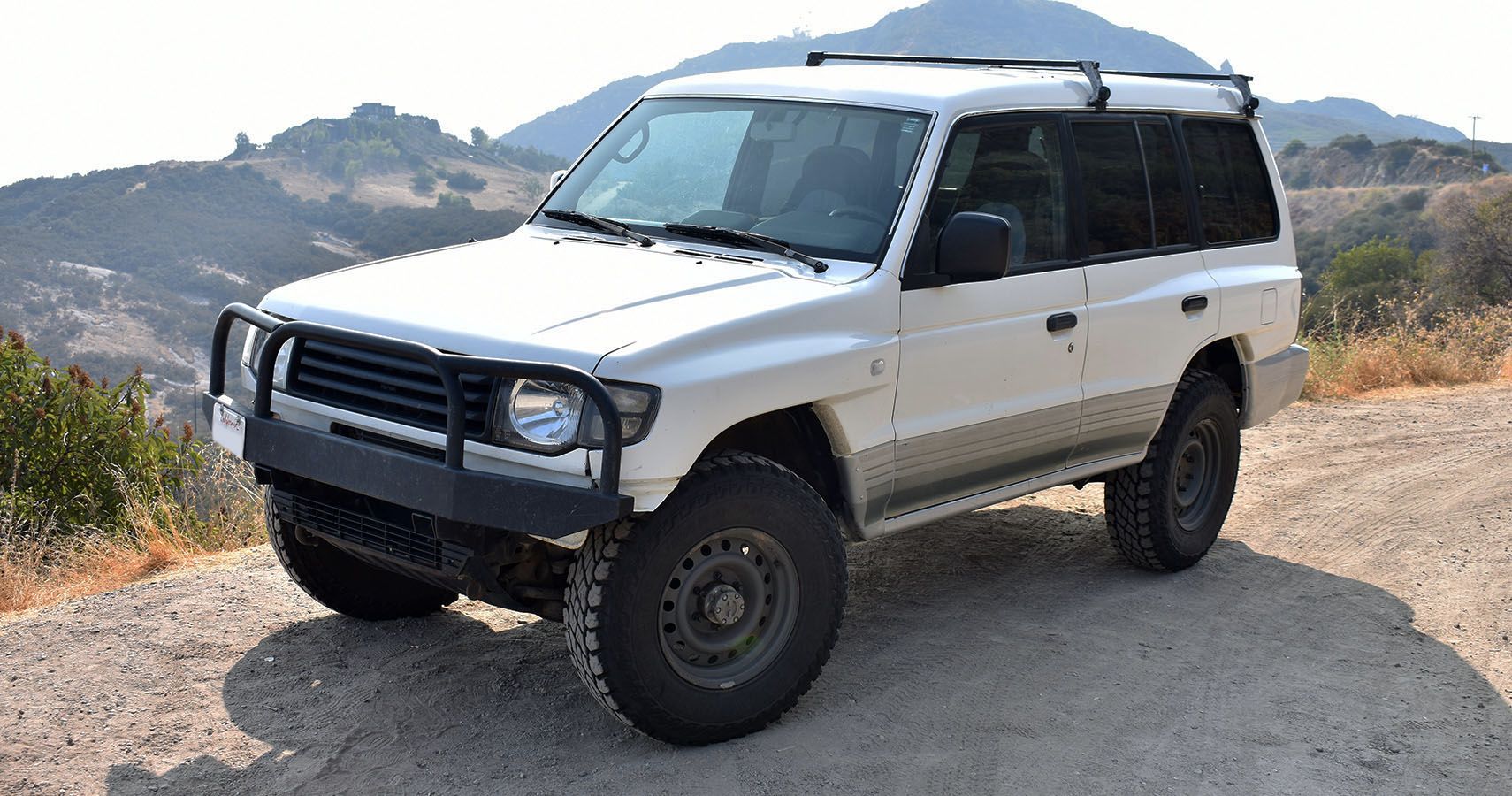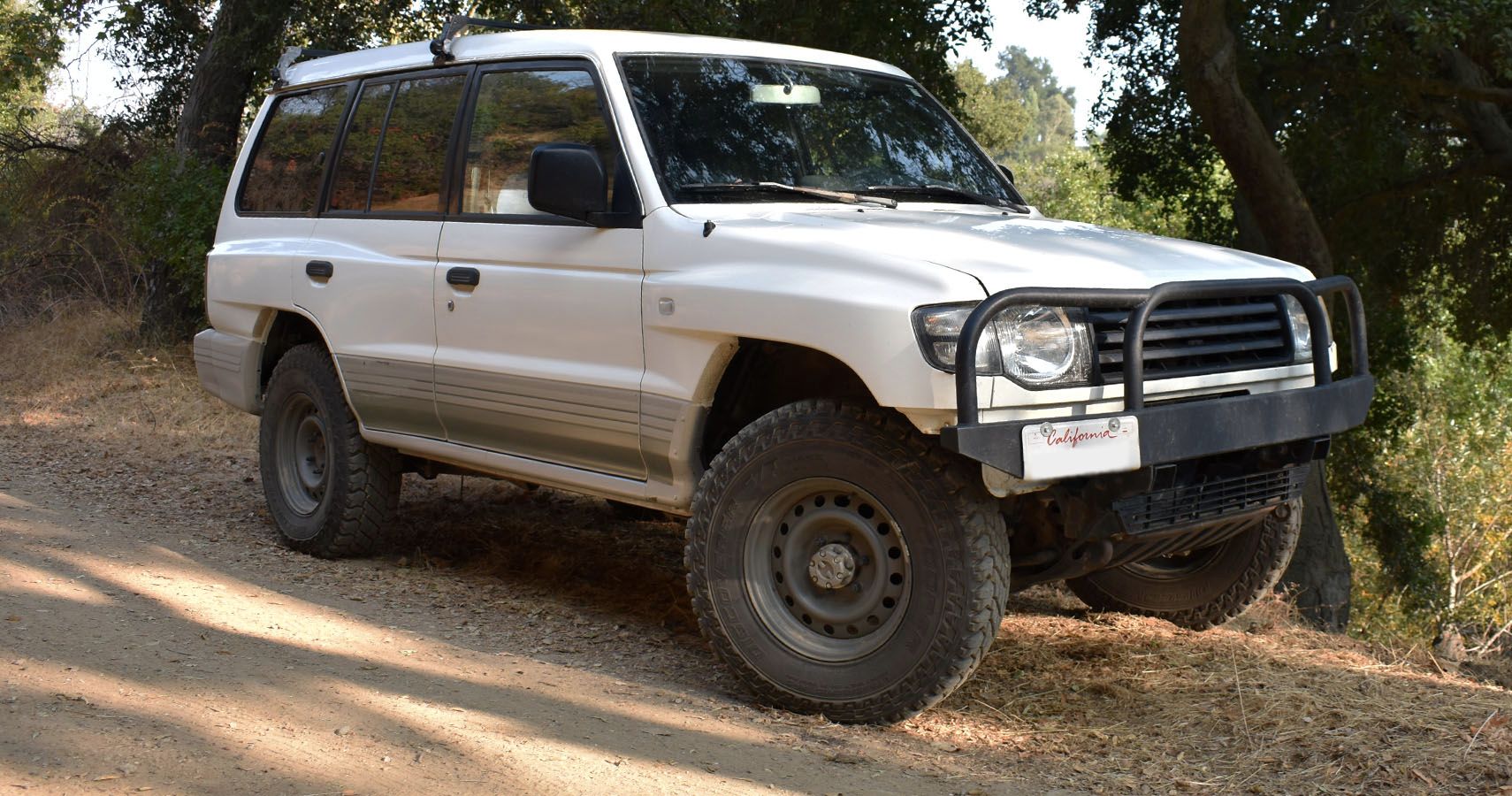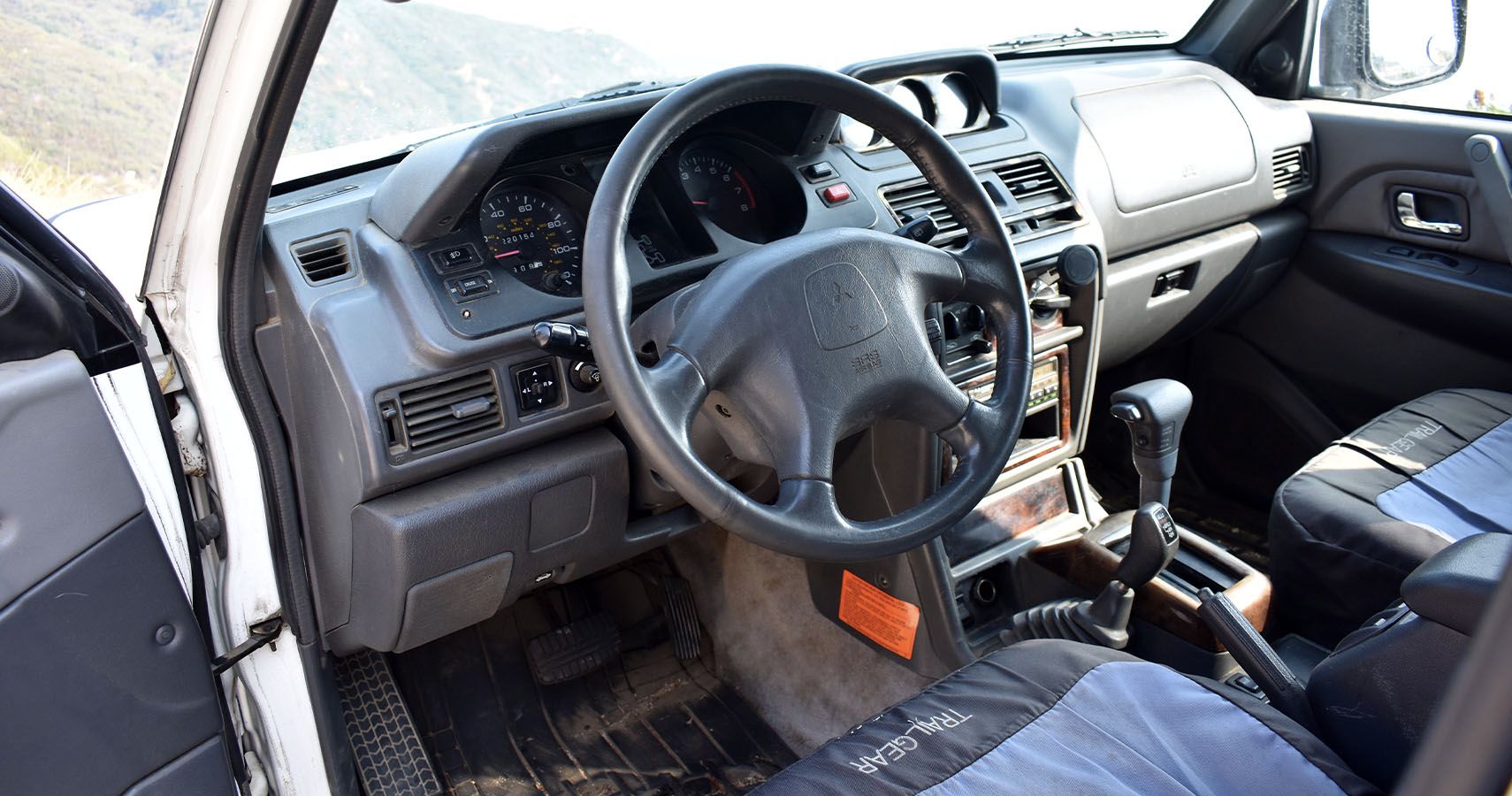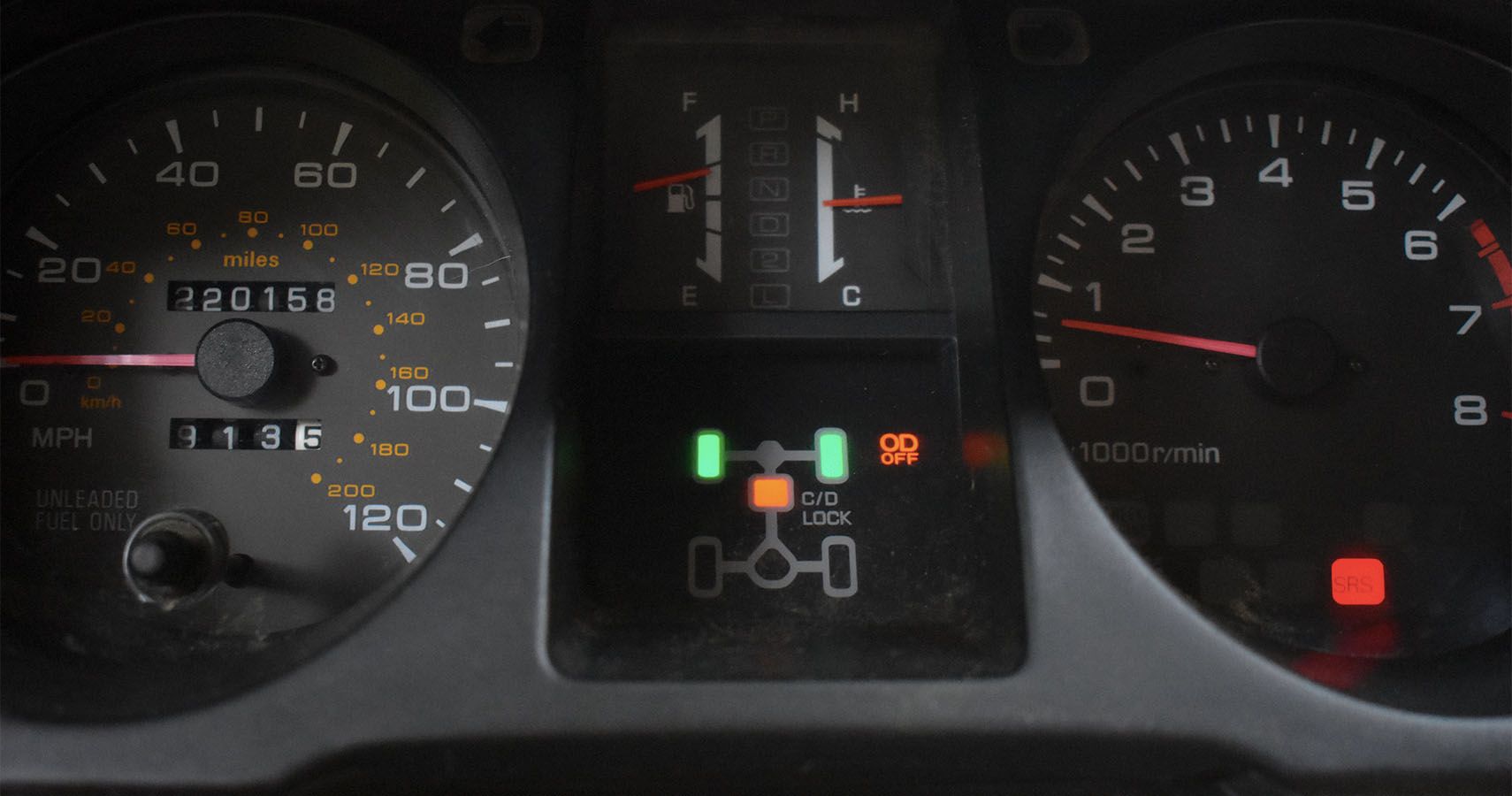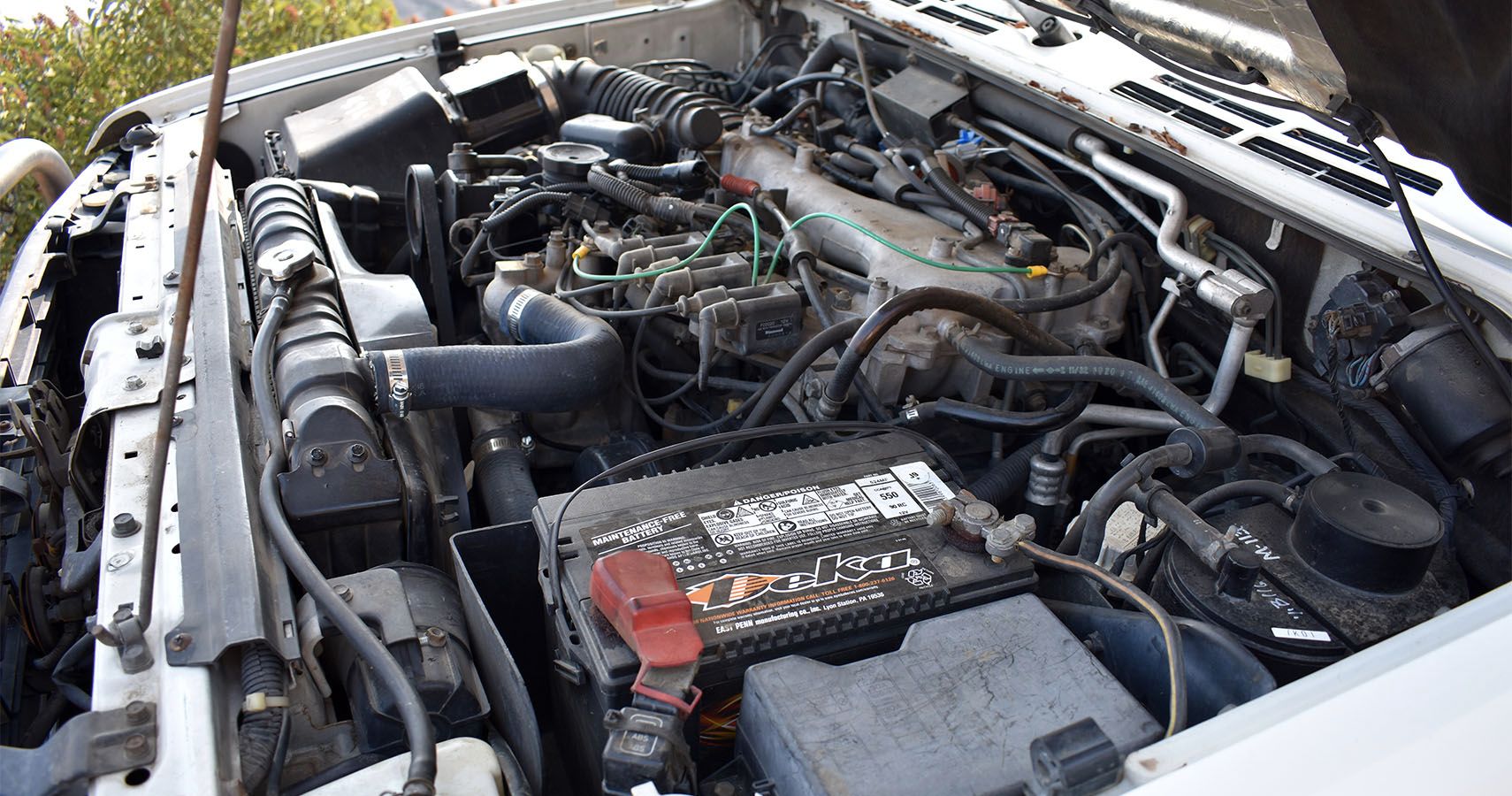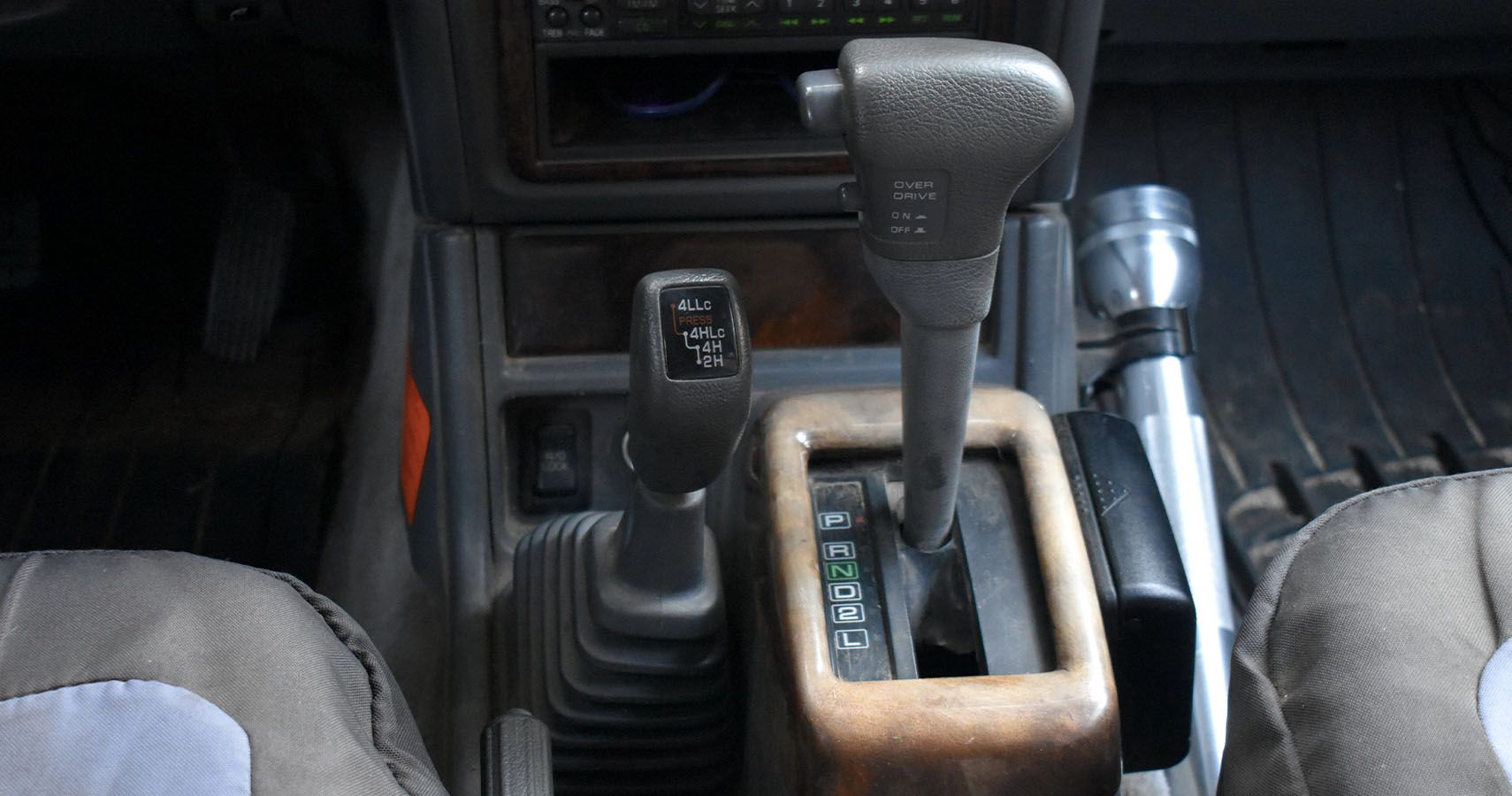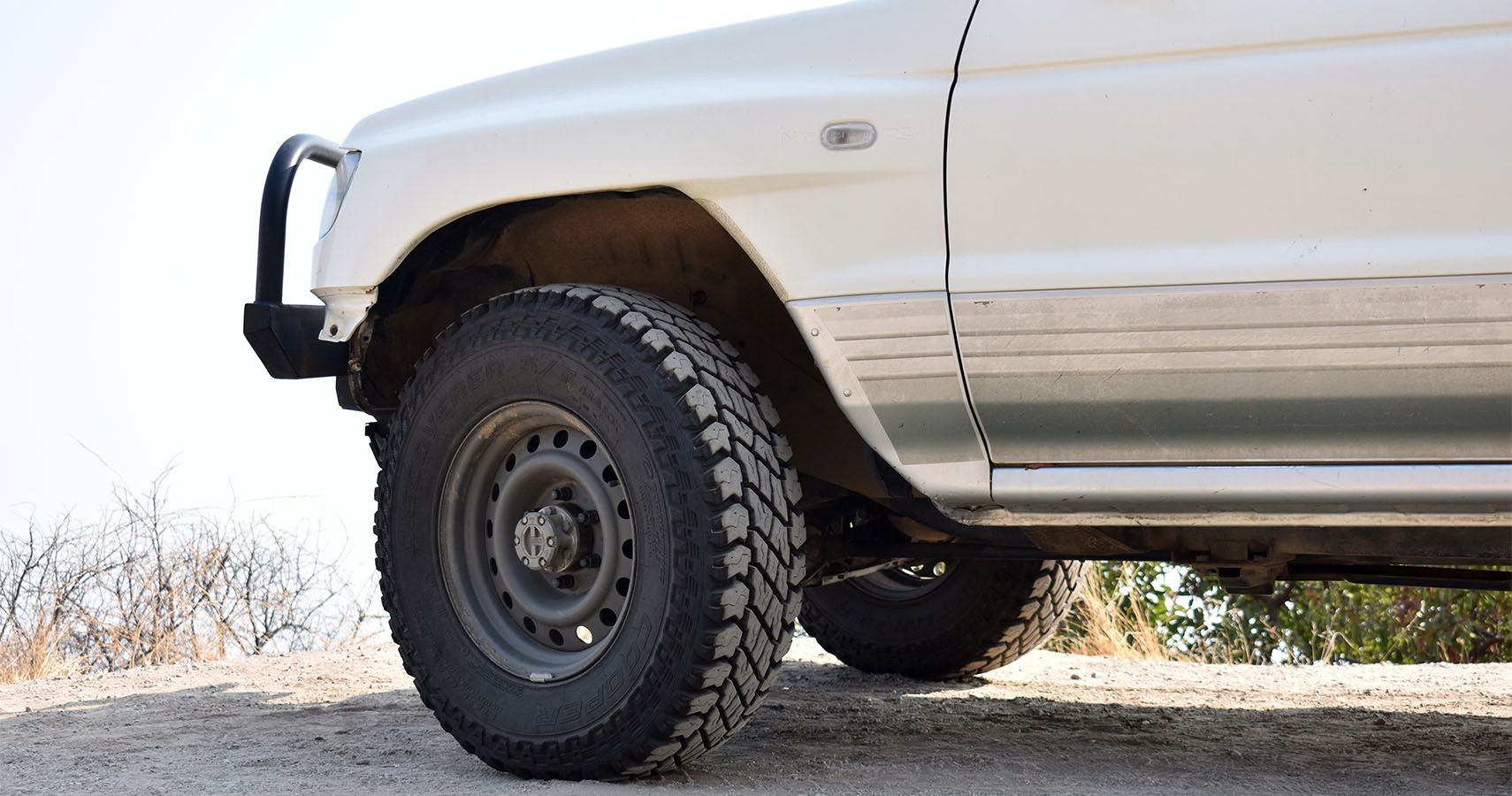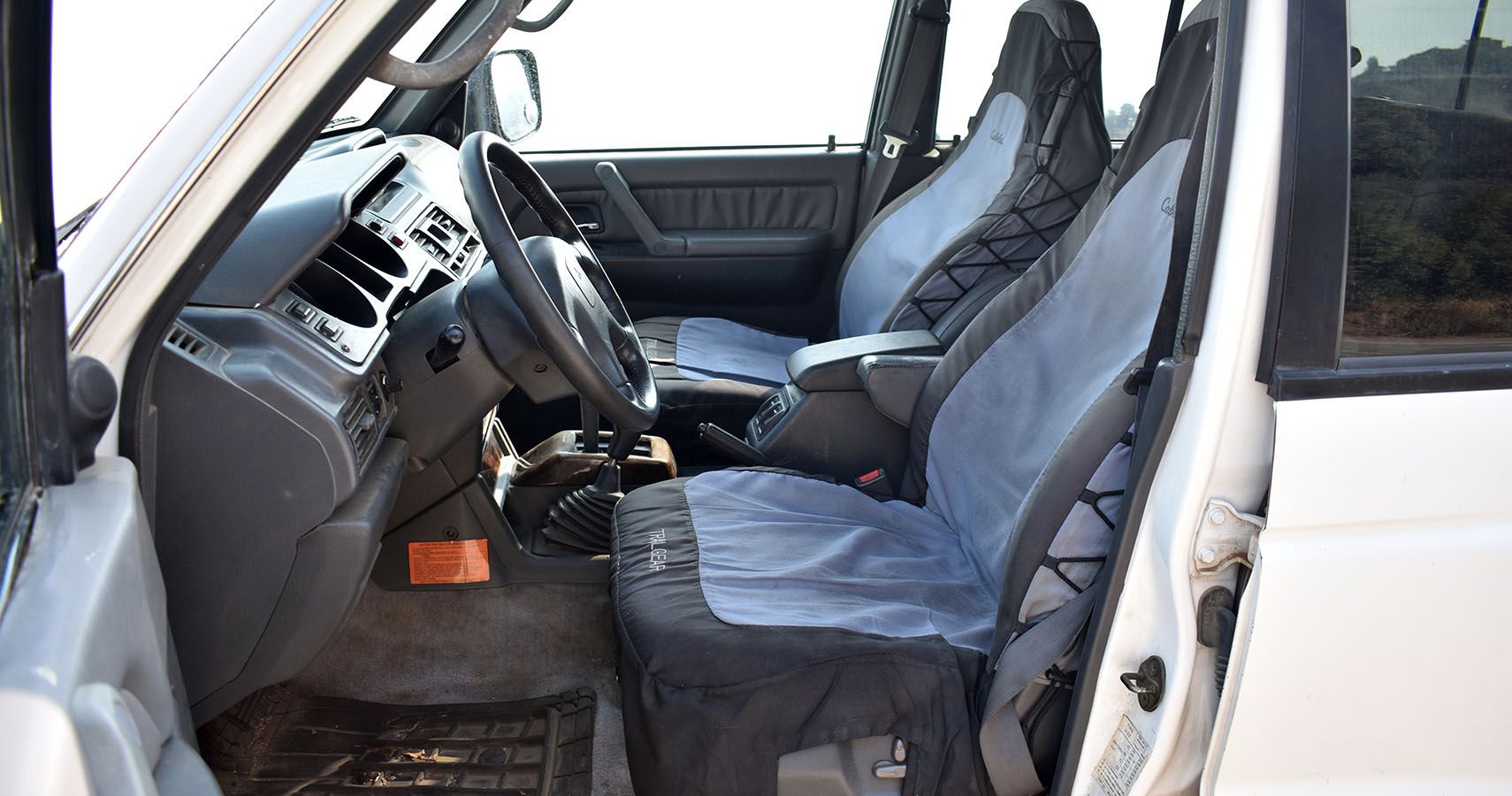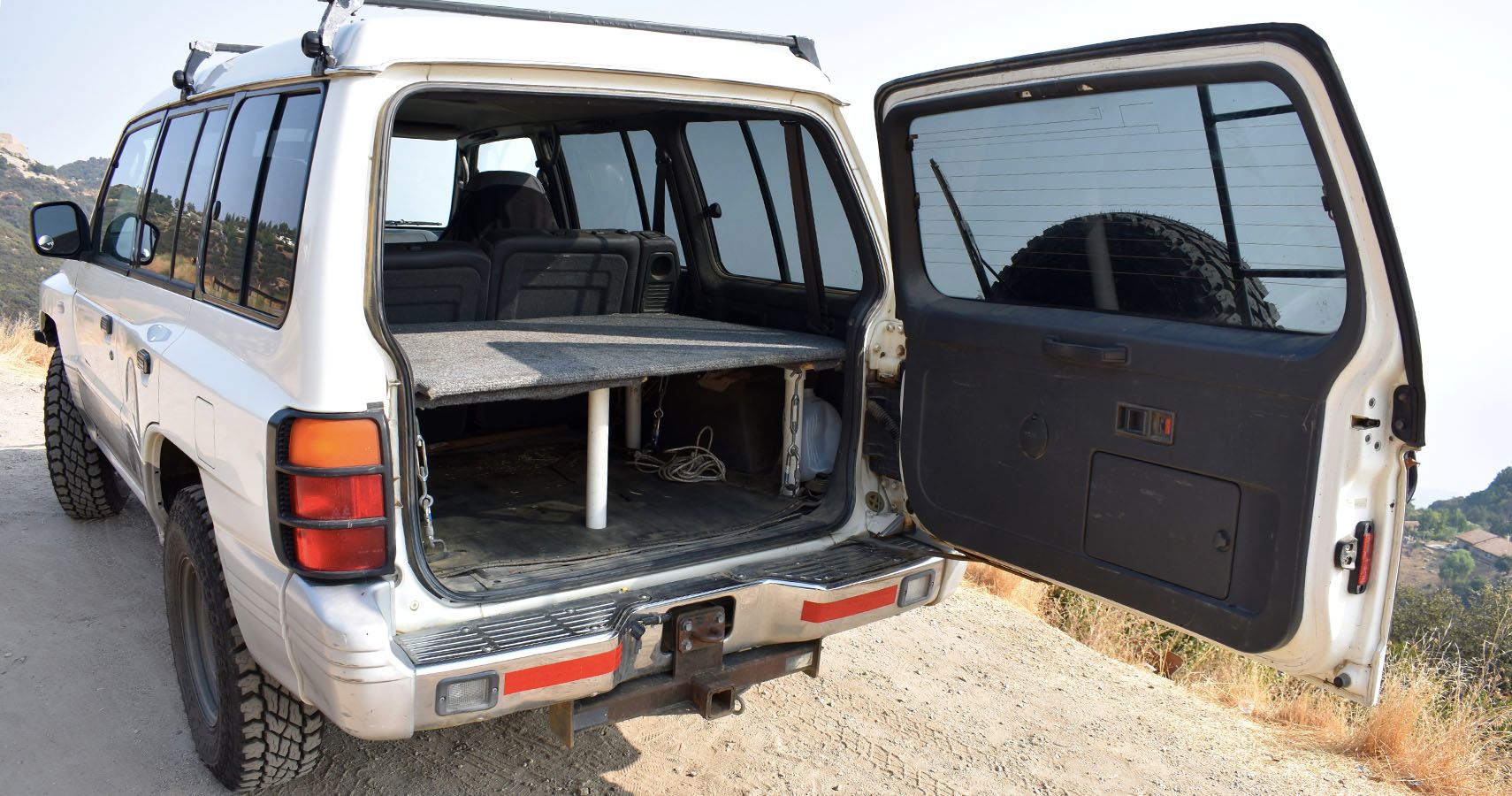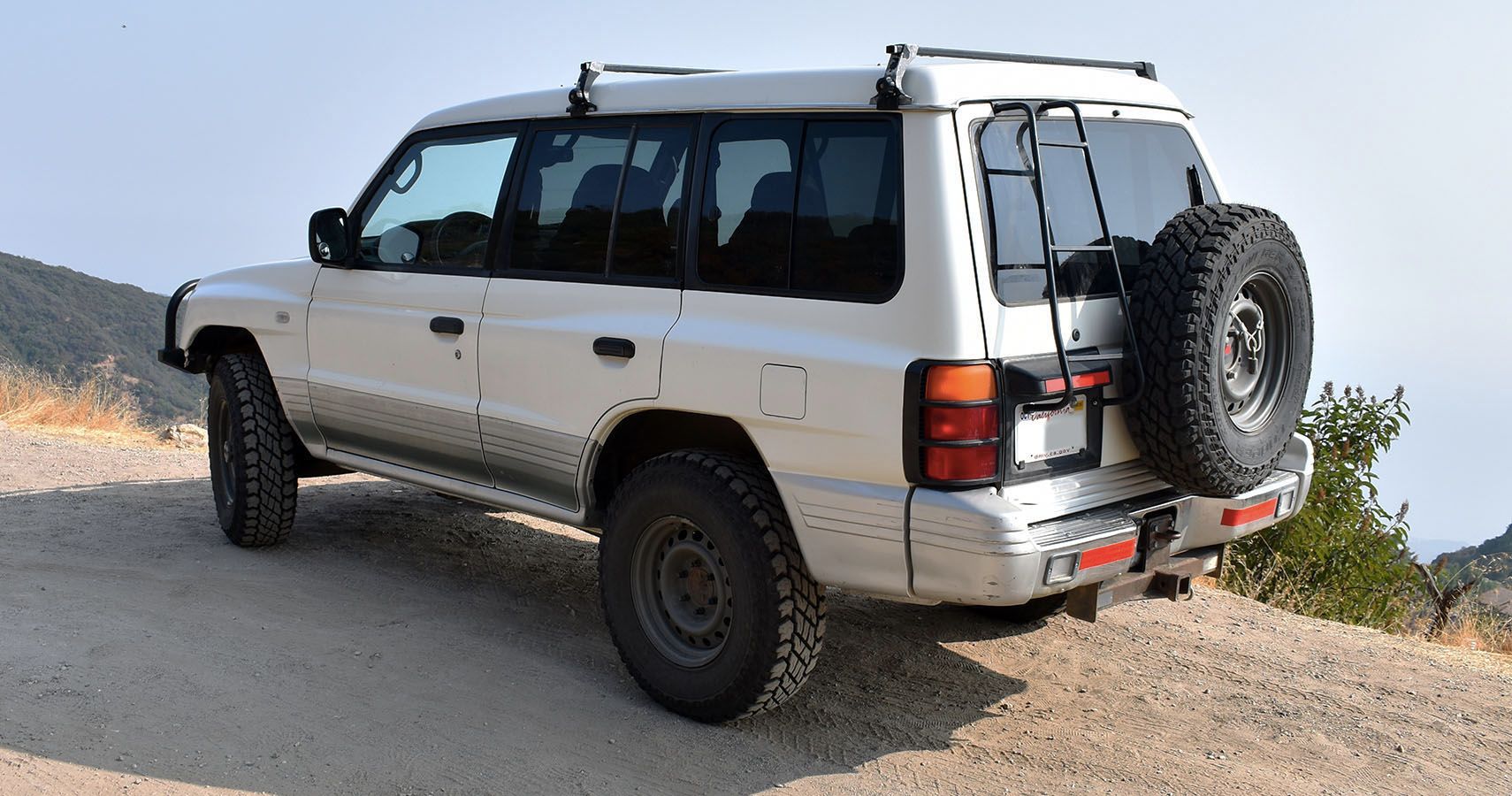Every single conversation I’ve had during the past few weeks in Los Angeles has inevitably turned into a discussion of impending doom. A global pandemic continues racking up its toll on both human lives and economic prospects. Civil unrest has been only exacerbated by political division and the seemingly unavoidable collapse of American democracy. And to top it all off, the worst fires in recorded history have turned LA’s skyline into a smoky Blade Runner grey, just without the flying cars and murderous robots (for now, anyway).
But amid all the fear and uncertainty, I find solace in my recent acquisition of a 1998 Mitsubishi Montero, one of the best bargain off-roaders on the secondhand market and an SUV that I’m absolutely certain will survive the apocalypse—even if I don’t.
Overlooked No More
For over two decades, Mitsubishi’s Montero has lived in the shadows. Even among Mitsubishis of the era, it’s been relegated to a level below the rally-bred Eclipse and Lancer sports cars. And among its contemporary SUV competition, the Montero commands much less respect than a late-90s Toyota 4Runner or Land Cruiser.
And yet, that tide may be in the process of turning. Jalopnik recently wrote about the Montero’s own rally history, reminding readers that there’s a good case to be made that the Montero is actually the most successful rally vehicle of all time, having dominated the Dakar endurance event with 15 all time wins out of 32 races.
Of course, the Montero that won those races was badged as a Pajero—the moniker most of the rest of the world uses for this truck—and it was a highly-tuned homologation special. But the body-on-frame layout, pickup truck DNA, and rugged utility of the Montero still remained in place.
Meanwhile, compared to the Toyota-badged competition, the full-sized Montero—it’s important to note that this is not the smaller Montero Sport—sits somewhere between the 4Runner and Land Cruiser in terms of size and sellers ask a mere fraction of the prices of used Toyota SUVs on the secondhand market today.
But how does the Montero compare to new off-roaders on the market? Well, as the social media feud between Jeep and Ford heats up, I can't help but chuckle. Sure, my Montero doesn't have electronically disconnecting sway bars, multiple suspension settings, or an eight-speed automatic transmission. But it can do 90% of the things a Wrangler Rubicon can at about 10% of the price.
My Montero Is Perfect
Okay, to be fair, this Montero isn’t perfect. But at a $3,500 entry cost, it’s hard to beat. The previous owner, Tyler, might have even gotten a bit more than this Montero was worth with just over 212,000 miles on the clock. But he was entirely forthcoming and honest, and it was clear he’d loved this car during his many years and hundreds of thousands of miles of ownership. Why was he selling? Well, therein lies a story.
During the test drive, he admitted that the coolant system leaked like a sieve—luckily, only when the Montero was sitting, so the test drive was (relatively) safe. But that brings us to a discussion of this particular Montero’s quirks and foibles.
As Tyler described it, the truck dumped all its coolant as soon as the engine shut off. Unfortunately, that pointed to a water pump in desperate need of replacement. Even more unfortunately, the Montero’s 3.5-liter V6 is an interference engine, so a water pump replacement dictated a timing belt replacement—about an $800 job at a mechanic’s shop or a complicated process of disassembly and installation at home.
No More CEL But Check Out That 4WD Display
It also wouldn’t pass smog due to the Check Engine Light being illuminated. All things considered, Tyler was a bit short on money due to family concerns and just couldn’t keep his beloved Montero, which he’d thoroughly enjoyed camping all over the Western United States and Mexico. And so, it hit Craigslist with an ask of $4,500.
With that brush guard up front, the ride height, that rack, plus the spare tire and ladder combo out back, it was just irresistible. Wanting to get the Montero up and running ASAP so that it could be smogged and the title transferred, a decision seemed easy: pay a mechanic the $800 to get the job done quickly.
After shelling out that cash, plus some troubleshooting with emissions sensors, the Montero passed smog and the title was transferred and all seemed hunky-dory. Time to get out there and drive!
Drives Like A Truck In The Best Way Possible
Under the hood, the 3.5-liter DOHC V6 features 24 valves and was factory rated at 186 horsepower and 226 lb-ft of torque, which isn’t a whole lot for a tall SUV that weighs around 4,500 pounds and pushes a ton of air.
But still, and I mean this in the best way possible, the Montero drives like a truck. The body-on-frame platform, the upright seating angle, the respectable-if-not-overwhelming V6 under the hood, and the Aisin four-speed automatic transmission with overdrive all constantly serve to remind me that I’m driving a truck with just a tiny bit of luxury thrown in.
And in all fairness, the full-sized Montero was pretty nice for 1998. That model year makes my Montero what’s known as a “Gen 2.5” with the perfectly 1990s-era fender flares and an awesome winter package that includes an air-locking rear differential and a transmission hold function that keeps the gearbox in second during low-traction starts.
Two Shifters Control The Drivetrain
As opposed to the smaller Montero Sport, the full-sized version also has true four-wheel drive rather than all-wheel drive, with a real two-speed transfer case including a locking center differential, and the aforementioned air-locking rear diff. Tyler also installed manually locking hubs up front, which is a nice touch to save the 4WD components some wear and tear during daily driving.
Running around town, cruising on the highway, or blasting up dirt roads, the Montero drives remarkably well. The ride is smooth, the transmission shifts crisply and the V6 actually puts out plenty of power when it spins up above 4,000 RPM.
Built To Go Off-Road
Off the tarmac, however, is where the Montero truly shines. The suspension setup is truly remarkable, revealing why the Pajero Evo was able to survive the grueling Dakar Rally so effectively. Shortly before selling, Tyler installed new Bilstein shocks all around, which perfectly complement the coil-sprung solid rear axle (no leaf springs!) and Panhard bar setup. And the Cooper Discoverer Mud Terrains might be a bit loud in town but they’re worth the bit of noise once they leave the asphalt.
The Montero has also given me a chance to explore the best use of differential locks and 4WD settings for winter runs up to Mammoth and out to Colorado during ski season. Surprisingly, the best combo seems to be to leave the rear diff open, activate the trans hold, and lock the center diff. I’ve driven up steep roads through 14 inches of snow (just before pandemic lockdowns) without any sign of slippage.
Creature Comforts
I mentioned above that the Montero was actually quite well-apportioned for a 1990s SUV. The interior is comfortable, if a bit Spartan compared to today’s ventilated leather seats and panoramic sunroofs. It does have heated seats with adjustable lumbar support, though, as well as a perfectly adequate sunroof that I plan to never open even once.
The front seat upholstery has deteriorated to the point of requiring seat covers—but I just don’t care. This is a third-world truck and spending a few grand to get the leather seats redone would be an absurd investment.
Set Up For Car Camping
In the rear, Tyler installed an awesome homemade bed structure that doubles as a makeshift cover for the trunk and can fold out over the rear bench to create a cozy sleeping arrangement. Part of the system includes a 45-gallon Yeti cooler that can slide in and out, as well. Compared to the tens of thousands of dollars a shiny, new overlanding setup might cost, this setup seems like a steal to me (and I do seriously wonder what suddenly became wrong with sleeping in a tent on the ground, too).
On the exterior, he installed an aftermarket front bumper from Adventure Driven Design, sourced the rear ladder off a Land Rover, and had a set of five steel Toyota wheels machined to fit the Montero’s hubs. The beat-up roof rack will be perfect for a ski box if I ever go on a trip with friends—til then, social distancing efforts will allow my skis to ride up to the hill inside the truck.
What’s Next
What’s on the horizon for my Montero? Well, assuming the world can stave off any more catastrophe, I’ve gotten ahold of Mitsubishi's factory Montero service manuals with some work in mind.
I’m planning to remove the alarm system, which other owners have frequently reported on forums can render the truck immobilized for no reason, and install a kill switch. A new sound system will be part of the mix, since we are in 2020 and I’m spoiled by Bluetooth connectivity.
The front end tracks straight and takes speed bumps smoothly, but on jittery surfaces and during real off-roading, there are some clunks. A set of control arm bushings might fit into the mix if the symptoms get worse but this isn’t a sports car, so I’m not too concerned.
Unfortunately, the OEM timing belt and water pump kit Amazon shipped was for the wrong engine, so the mechanic installed cheap aftermarket parts rather than making a quick phone call—which means I’m banking on 20,000 miles before redoing the work myself, rather than the factory-recommended 40,000-mile interval.
Other than that, I plan to keep the truck filled up with gas and ready to rumble in case I do need to get outta town quick. And in my Montero, I know that even if the 405 is gridlocked, I can bug out over the mountains with ease.
Sources: Jalopnik, Pajero Owners Club UK, and Outside Online.

